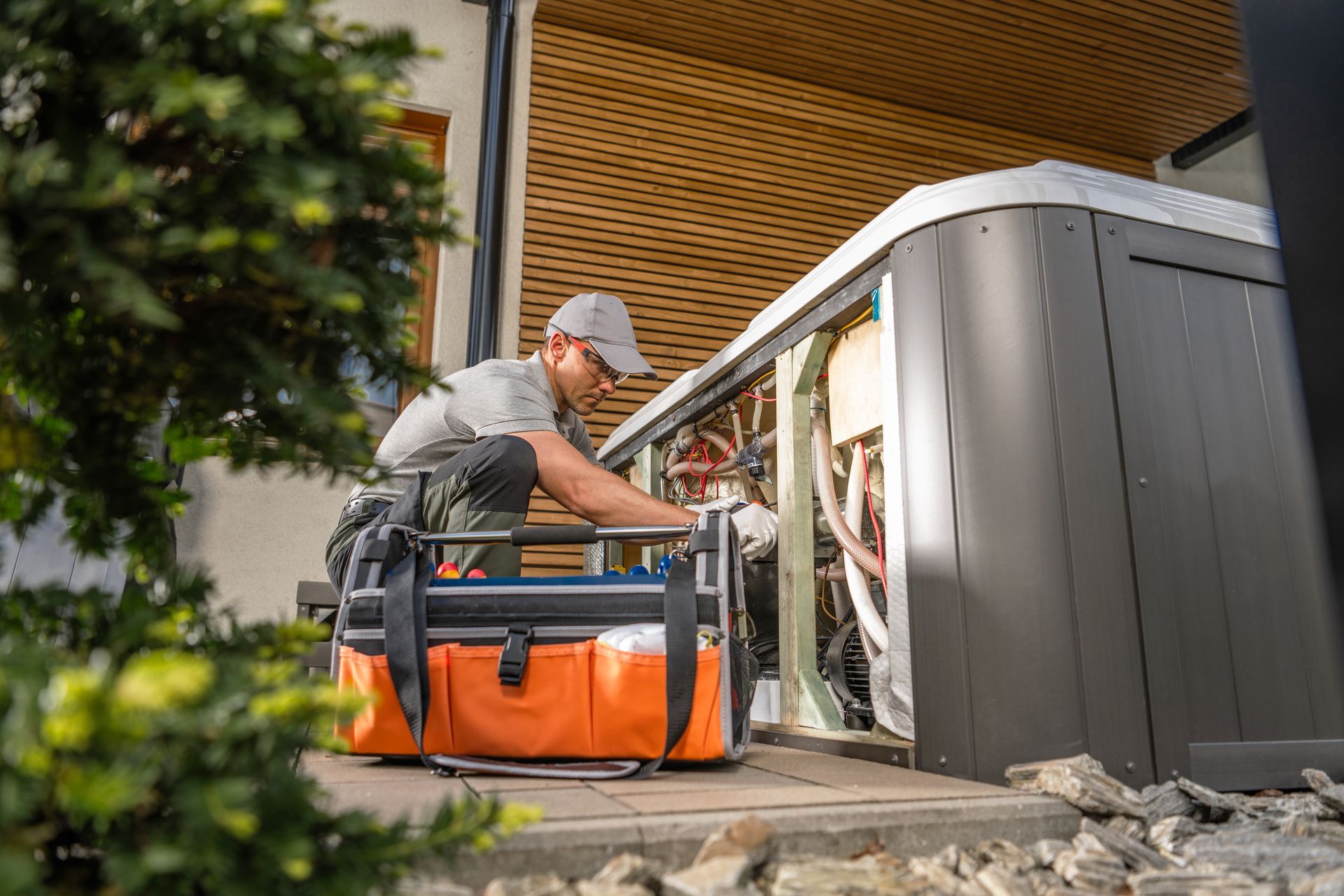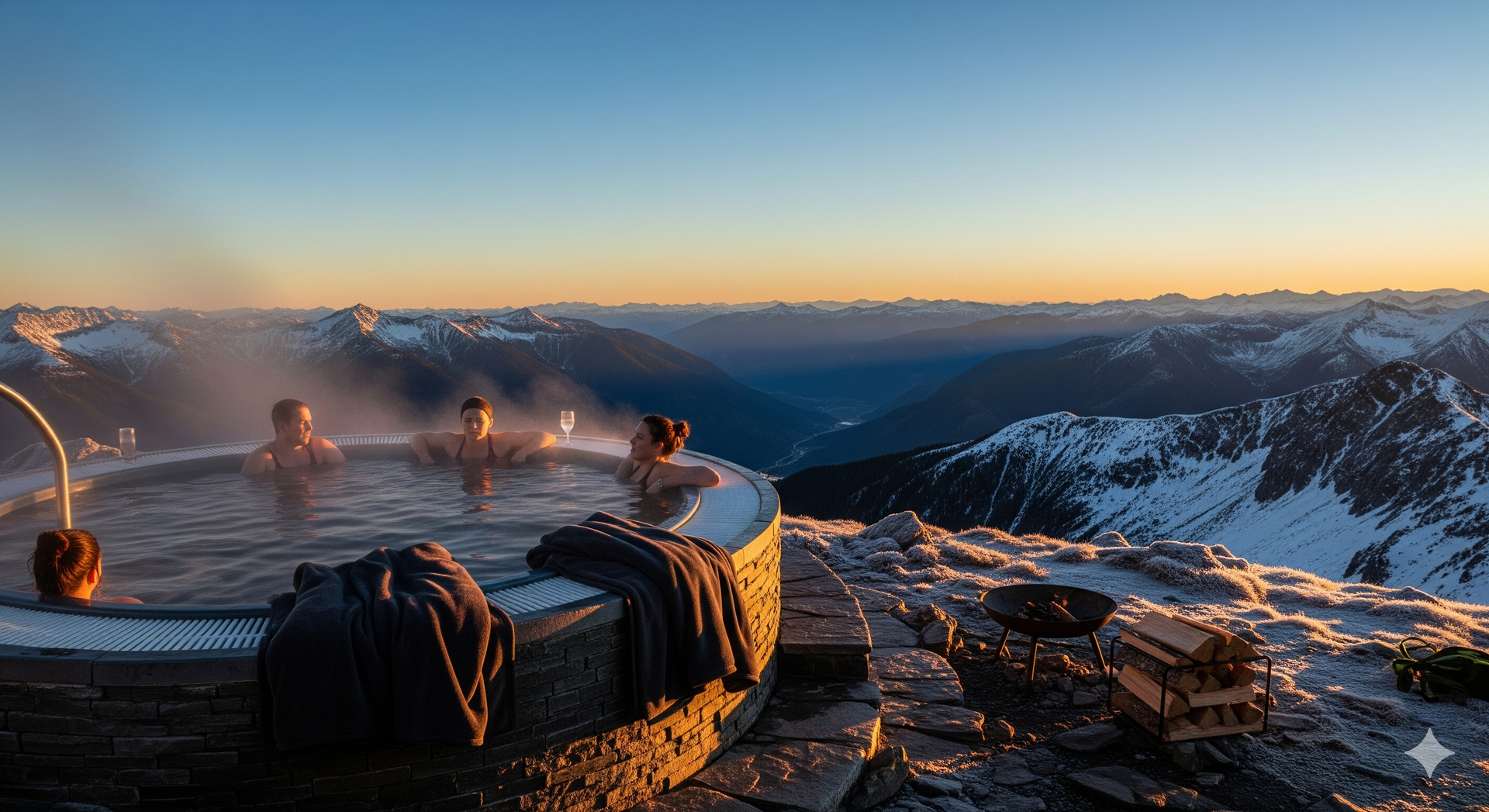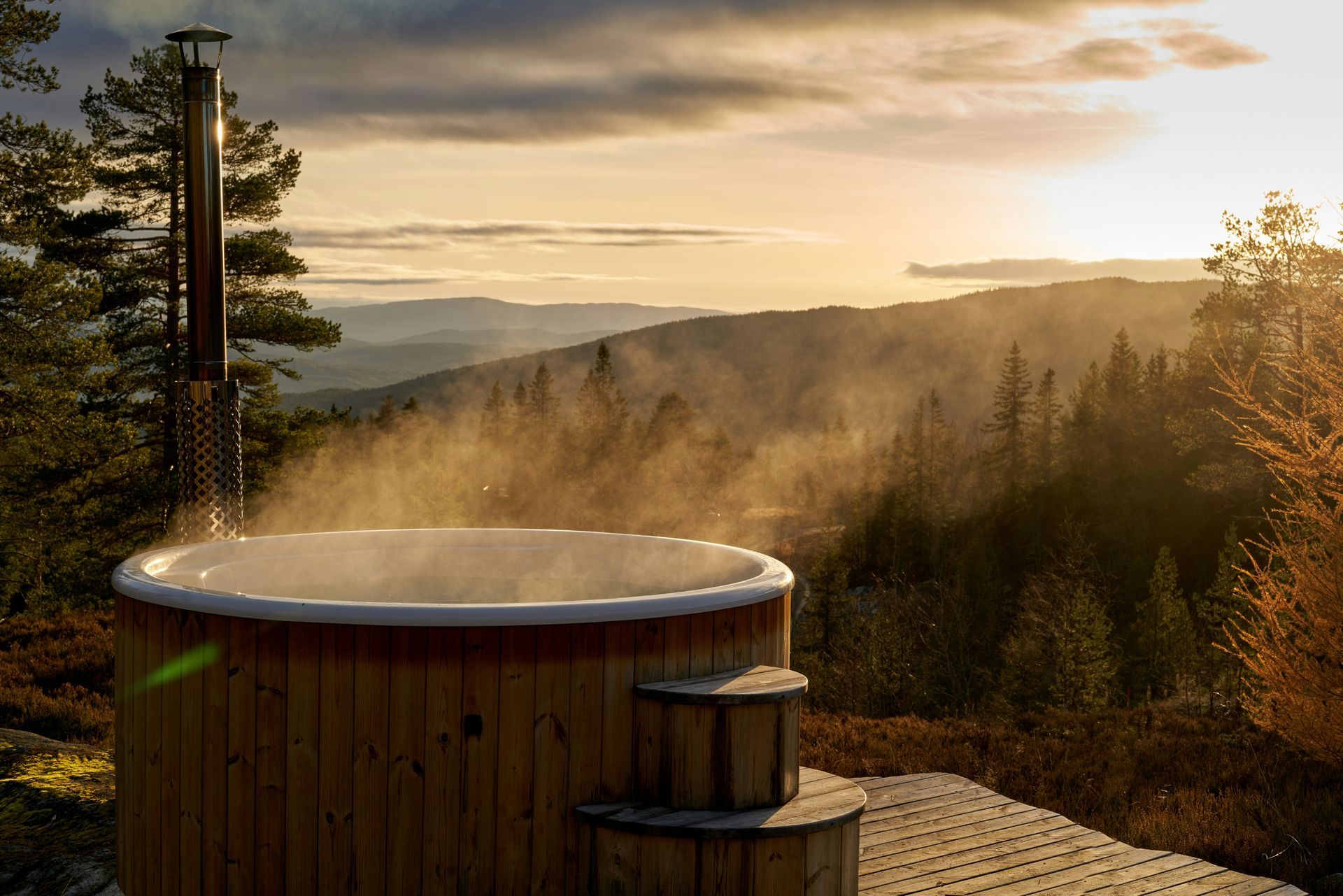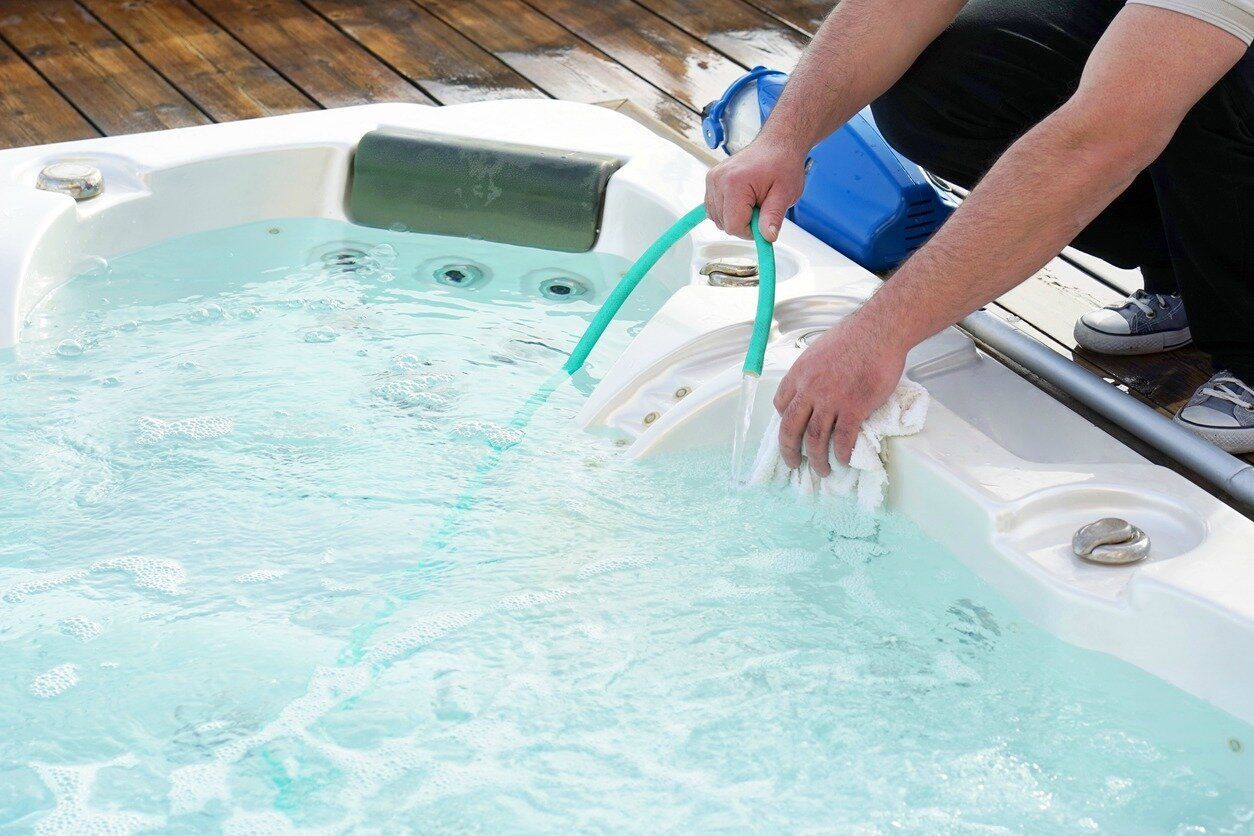How High Elevation Affects Hot Tub Performance in Colorado
Up in Colorado’s mountains, your hot tub has to work overtime because the air’s thinner and cooler, making it slower to heat up. That thinner air messes with the heater’s efficiency and heat just doesn’t stick around as well. You’ll want to bump up the temp a bit and keep an eye on water chemistry since things shift at altitude. Plus, good insulation becomes your tub’s best friend. If you need help with maintenance or hot tub repair, local professionals can guide you. And for those wondering where to find expert service in your area, check out our service area for trusted support. There’s plenty more smart tweaks to keep your soak perfect up there.
Key Takeaways
- Higher elevation reduces atmospheric pressure, causing heaters to work harder and water to heat more slowly in Colorado hot tubs.
- Cooler temperatures and rapid temperature fluctuations at altitude demand superior insulation to maintain hot tub heat effectively.
- Hot tubs at high elevations require increased temperature settings and extended pump run times for optimal performance and water freshness.
- Water chemistry shifts at altitude, necessitating frequent testing and careful pH and alkalinity adjustments to prevent corrosion and irritation.
- Regular maintenance, including filter cleaning and seasonal tune-ups, is essential to handle mineral-heavy water and prolong hot tub lifespan.
Understanding Atmospheric Pressure Changes at High Elevation
Since you’re dealing with hot tubs in Colorado, you’ve probably noticed the air feels a bit different up there. That’s because as you climb higher, the atmospheric pressure drops. It’s one of those altitude effects that can catch you off guard if you’re not used to mountain living. Lower atmospheric pressure means the air is less dense, so it doesn’t push down on everything as much as it does at sea level. This change affects more than just how hard it is to breathe; it subtly shifts how your hot tub behaves too. You and your fellow Colorado hot tub lovers share this unique experience—knowing that the thinner air up high plays a role in your soak. Understanding these atmospheric quirks helps you appreciate why your hot tub might feel or work a bit differently than one down in Denver or at lower elevations.
Impact of Thinner Air on Hot Tub Heating Efficiency
Even though your hot tub may seem like it’s just sitting there, the thinner air up in Colorado is quietly making its job a bit harder. You see, lower air pressure means fewer air molecules pressing down, and that affects heat transfer from your heater to the water. It’s like trying to warm up a room with fewer blankets—it just takes longer and works less efficiently. But don’t worry, you’re not alone in this high-altitude hot tub challenge! If you’re thinking about upgrading, consider checking out new hot tubs in Breckenridge designed for mountain conditions.
Here’s a quick peek at what’s going on:
| Factor | Effect on Hot Tub Heating |
|---|---|
| Thinner Air | Reduced heat transfer efficiency |
| Lower Air Pressure | Heater works harder, uses more energy |
| Heat Transfer | Slows down, water heats up slower |
Effects of Cooler Temperatures on Water Temperature Maintenance
When the temperatures drop in Colorado, keeping your hot tub water warm can feel like a real battle. You’ll want to lean on good insulation to help lock in the heat, because the heater has to work overtime otherwise. It’s like your hot tub’s version of bundling up for winter—without the cozy sweater, things get chilly fast! High-quality hot tub covers are a smart addition to help with heat retention.
Temperature Drop Challenges
Though Colorado’s crisp air can feel invigorating, it can also give your hot tub a serious run for its money. When temperatures drop, your tub struggles to keep water warm, especially with those wild temperature fluctuations that mess with heat retention. You might notice water cooling faster overnight or during sudden cold snaps. It’s like your hot tub’s caught in a chilly battle! Here’s a quick look at what happens:
| Time of Day | Temperature Drop | Impact on Hot Tub |
|---|---|---|
| Evening | 15°F | Water cools quickly |
| Night | 25°F | Heat retention drops |
| Early Morning | 10°F | Water temp sinks |
| Afternoon | 5°F | Heating less stressed |
Insulation Importance
Cold snaps and temperature swings can really test your hot tub’s stamina, making it work overtime just to keep the water warm. That’s where good insulation materials come in—they act like a cozy blanket for your tub, trapping heat inside. Think of thermal barriers as your hot tub’s best friends, blocking chilly Colorado air from sneaking in.
To keep your tub toasty, focus on:
- Choosing high-quality insulation materials that don’t compress or lose effectiveness
- Adding thermal barriers around the shell to minimize heat loss
- Regularly checking seals and covers to keep cold drafts out
Heater Efficiency Impact
Since the temperature outside can drop quickly in Colorado, your hot tub’s heater has to work extra hard to keep the water warm. Cooler air means more heat escapes, so your heater types—whether electric, gas, or even propane—need to kick into higher gear. Choosing the right energy source makes a big difference in how efficiently your hot tub performs. Electric heaters are common and easy to use, but gas heaters can warm water faster, which is handy when temps plunge. Just remember, no matter which heater you pick, maintaining it well helps keep energy costs down and water cozy.
Adjusting Hot Tub Settings for Mountain Environments
When you’re setting up your hot tub in the mountains, you’ve got to think about a few special things that don’t come up in warmer places. The altitude means thinner air, which can mess with how your hot tub heats and circulates water. You’ll want to make some temperature adjustments to keep things comfy and cozy as you get used to altitude acclimation. For detailed maintenance tips, see our mountain home spa maintenance guide.
Here’s the scoop on tweaking your settings:
- Boost the temperature a bit: Cold mountain air cools your tub faster, so crank it up a notch.
- Extend pump run times: Longer circulation helps maintain heat and keeps the water fresh.
- Check pressure gauges often: High elevation affects water pressure, so keep an eye on it to avoid issues.
Choosing the Right Hot Tub Equipment for Colorado Elevations
When you’re picking hot tub gear for Colorado’s high altitudes, some parts need a little extra love. You’ll want heaters built to handle thinner air, pumps that keep water moving smoothly, and insulation that won’t let all your heat escape like a sneaky mountain breeze. Trust me, choosing the right equipment now means you’ll soak in cozy comfort without cranking your energy bill through the roof.
Altitude-Specific Heater Options
Although hot tubs can feel like a cozy escape anywhere, choosing the right heater for Colorado’s high altitudes takes a bit more reflection. You’ve got to weigh altitude heating and how elevation adjustments impact performance. At higher elevations, water boils at lower temperatures, and heaters need to work smarter to keep things comfy. For more about how cold weather impacts hot tub performance, check out our hot tub performance guide for Summit County.
Here’s what to look for in altitude-specific heaters:
- High-efficiency models that adapt to thinner air
- Adjustable thermostat controls for precise elevation adjustments
- Robust heating elements designed to handle cooler mountain temps
Picking the right heater means you won’t just survive the altitude—you’ll thrive in it.
When you get this right, your hot tub becomes the perfect mountain retreat, warm and welcoming, no matter how high up you are.
Pump Performance Considerations
Since pumps play a big role in keeping your hot tub’s water moving smoothly, choosing the right one for Colorado’s high altitudes is a smart move. You’ll want a pump that handles thinner air without losing power, so your jets stay strong and soothing. When thinking about pump selection, look for models designed to perform well in lower pressure environments—this helps avoid extra strain. Also, keep in mind that pump maintenance is key; regular checks prevent issues that could slow things down or cause costly repairs. Staying on top of things like cleaning and lubrication keeps your hot tub feeling like a cozy mountain retreat all year long. Trust me, with the right pump and a little TLC, you’ll enjoy perfect bubbles no matter the elevation.
Insulation for Energy Efficiency
Even though Colorado’s crisp mountain air can feel invigorating, it can also sneakily drain your hot tub’s heat if you’re not careful with insulation. Choosing the right insulation materials is key to keeping your water warm and your energy bills low. You want to create a cozy bubble that holds in heat, especially at those high elevations where the air is thinner and cooler.
Here’s what to look for:
- High-quality foam insulation that wraps your tub like a warm jacket
- Reflective barriers that bounce heat back where it belongs
- Well-sealed covers that keep chilly drafts out
These simple upgrades mean big energy savings and more time enjoying your hot tub, without shivering or watching your heater work overtime.
Water Chemistry Considerations at High Altitude
When you’re soaking in a hot tub up in Colorado’s high altitudes, water chemistry plays a bigger role than you might think. The thinner air and cooler temps can shift your water pH and mineral balance, so keeping an eye on them helps avoid skin irritation or equipment issues. You’ll want to test your water more often and adjust chemicals carefully to keep everything comfy and safe.
Here’s a quick cheat sheet to keep you in the hot tub happy zone:
| Parameter | Ideal Level | Why It Matters |
|---|---|---|
| Water pH | 7.2 – 7.8 | Prevents corrosion & skin dryness |
| Mineral Balance | Stable, moderate | Protects pipes & jets |
| Total Alkalinity | 80 – 120 ppm | Buffers pH swings |
Tips for Extending Hot Tub Longevity in High-Elevation Areas
Although high-altitude hot tubs can feel like a dream, they need a bit more TLC to keep running smoothly for years. You’re not alone in wanting your tub to last and stay inviting, especially when Colorado’s elevation throws in some extra challenges. Staying on top of your hot tub service is key. Here are some friendly tips to keep your tub happy:
- Regularly check water filtration: At high elevations, water can get mineral-heavy, so clean or replace your filters often to keep things clear and comfy.
- Keep an eye on water chemistry: Balancing pH and sanitizer levels prevents corrosion and buildup, helping your tub last longer.
- Schedule seasonal tune-ups: Don’t skip these! A pro can catch issues early before they become costly headaches.
Frequently Asked Questions
How Does Altitude Affect the Lifespan of Hot Tub Seals and Gaskets?
You’ll notice seal degradation happens faster at altitude due to pressure changes. To keep your hot tub running smoothly, focus on regular gasket maintenance, ensuring your community of spa lovers enjoys longer-lasting relaxation together.
Can High Elevation Cause Increased Water Evaporation in Hot Tubs?
You might be surprised, but water loss can skyrocket in your hot tub. Lower humidity levels at high elevations speed up evaporation, so you’ll need to check and top off water more often to keep your tub inviting and cozy.
Are There Specific Insulation Materials Better Suited for Colorado’S Mountain Climate?
You’ll want insulation types like closed-cell foam or spray foam for superior thermal efficiency in Colorado’s mountain climate. They keep your hot tub warm longer and help you enjoy cozy, inviting moments with friends and family.
Does Elevation Impact the Effectiveness of Hot Tub Jets?
You’ll notice jet pressure drops about 10% above 5,000 feet, affecting your hot tub experience. Maintaining water temperature becomes trickier, but with proper adjustments, you’ll keep enjoying soothing jets and warm, relaxing baths together.
How Does High Altitude Influence Energy Consumption of Hot Tubs?
You’ll notice higher altitudes can decrease your hot tub’s energy efficiency, so you’ll want to make altitude adjustments to maintain warmth without overspending. Together, we can optimize your tub’s performance and save energy.
Final Thoughts
So, now you know why your hot tub might feel a bit slower to heat or harder to maintain in Colorado’s high spots. But hey, who wouldn’t want a little extra challenge when you get to soak surrounded by those stunning mountain views? Just tweak your settings, pick the right gear, and keep an eye on your water chemistry.
Have questions about maintaining your high-elevation hot tub? Check out our
FAQs or
contact us to get personalized advice from the Summit Hot Tub experts. Start enjoying your mountain soak at peak comfort today!








